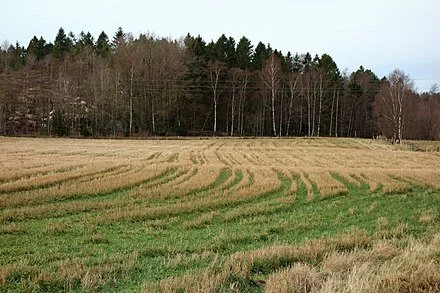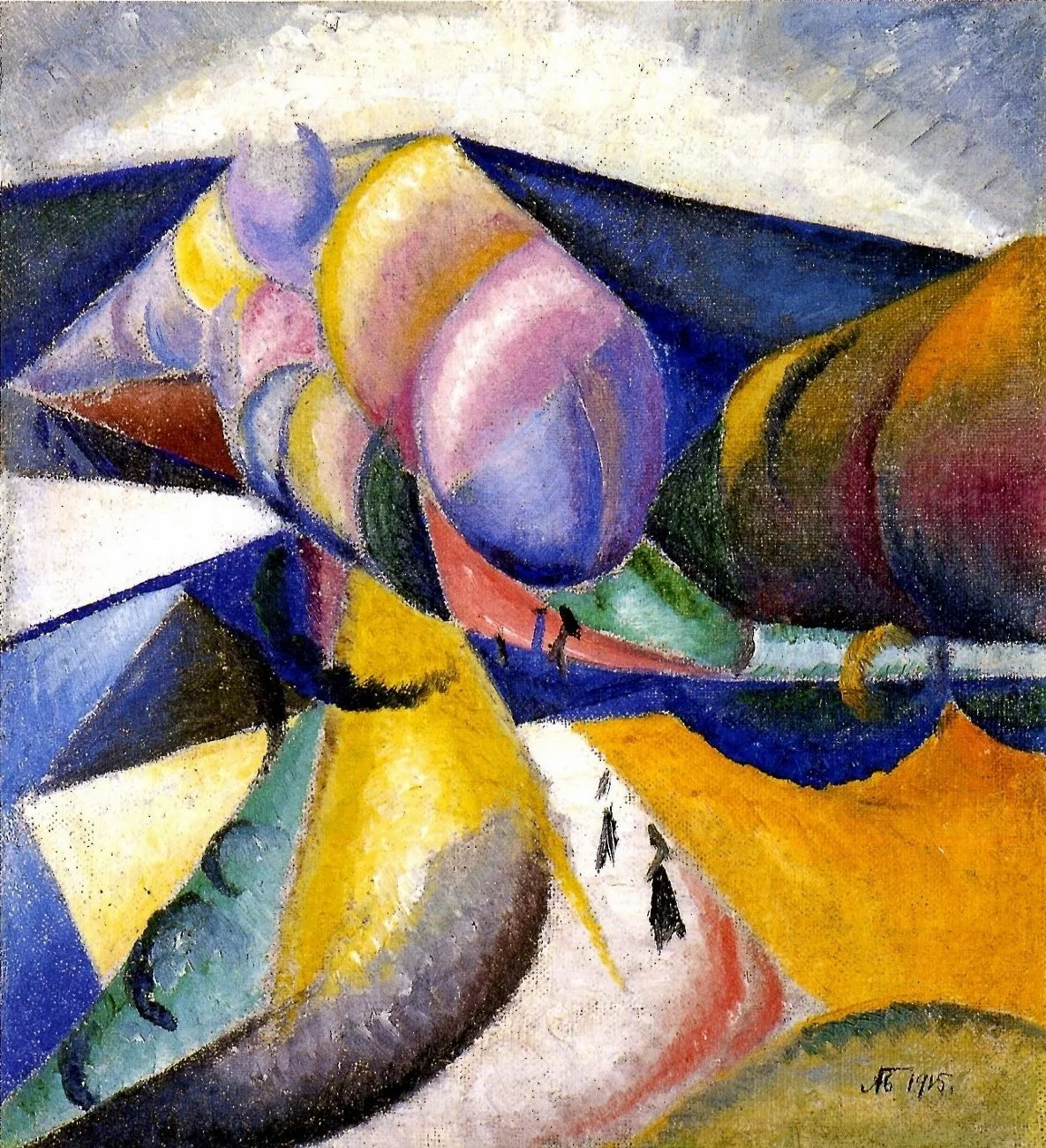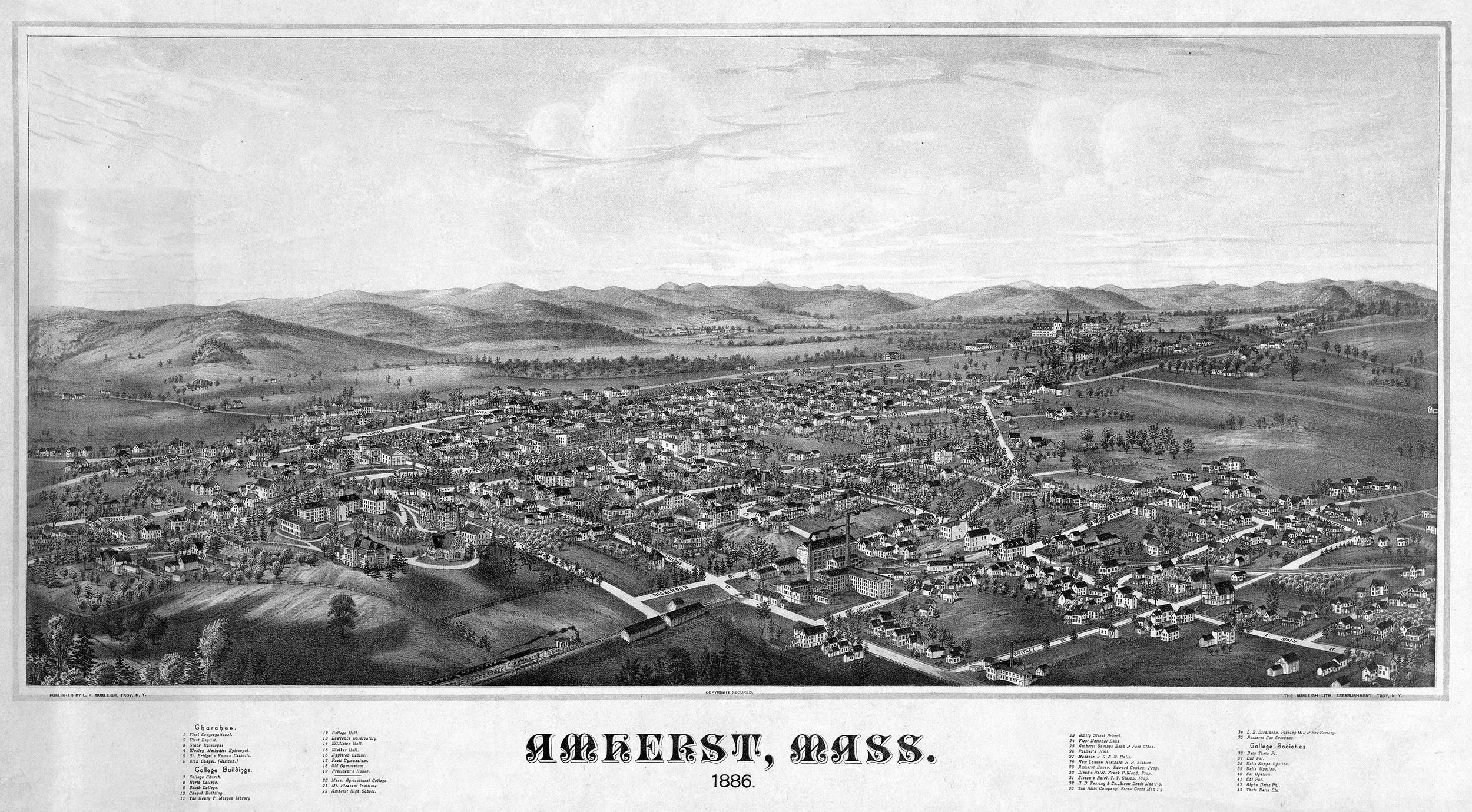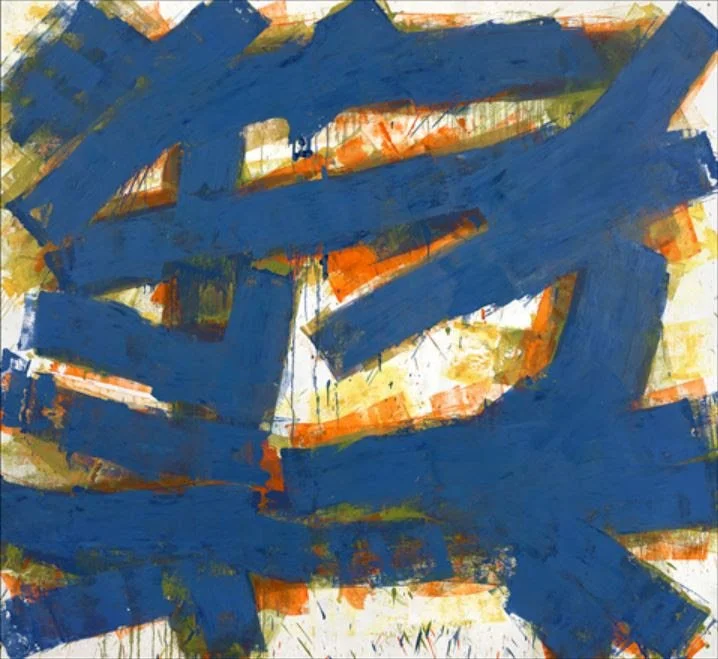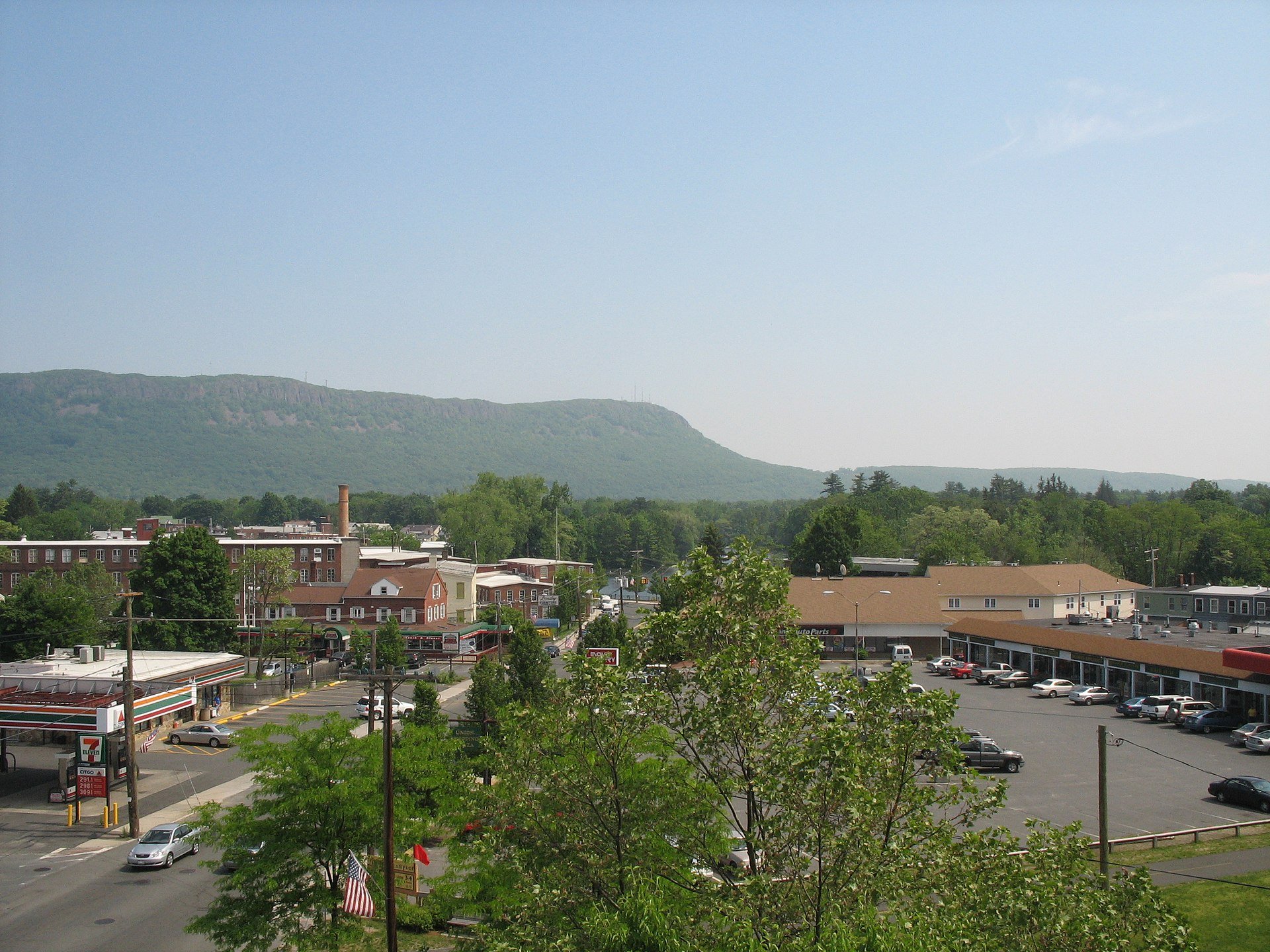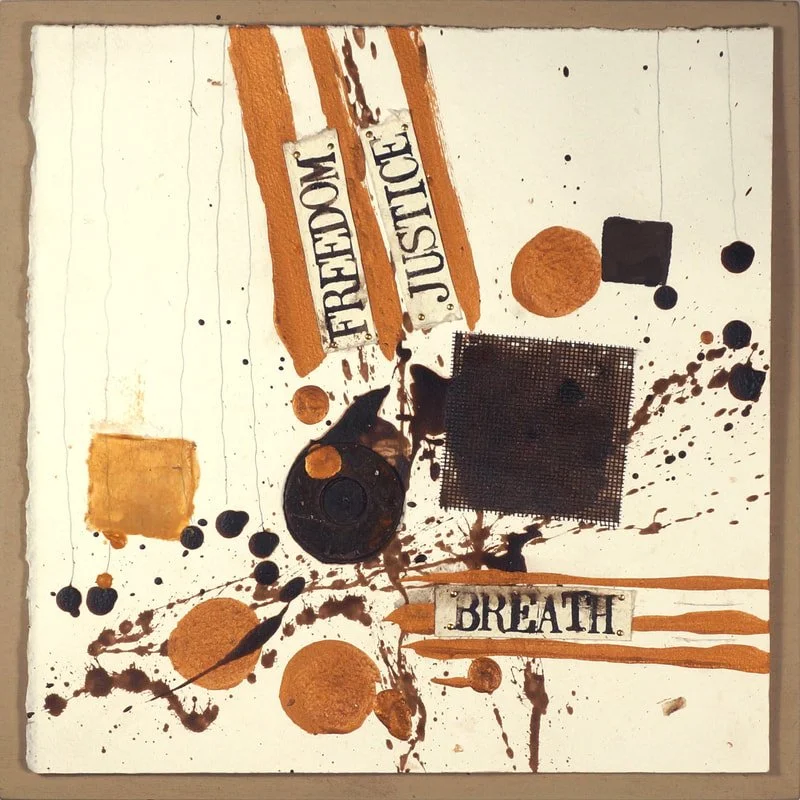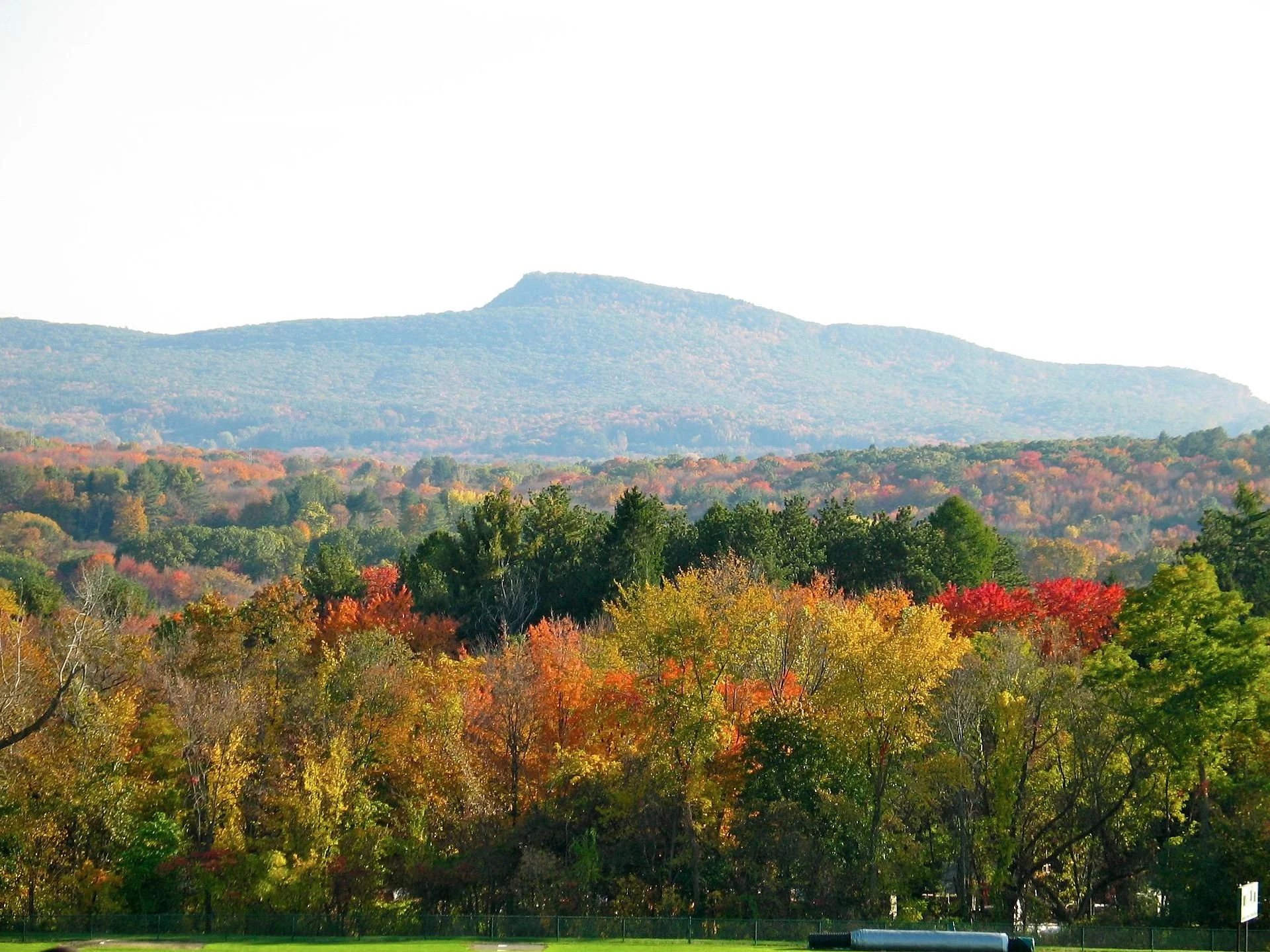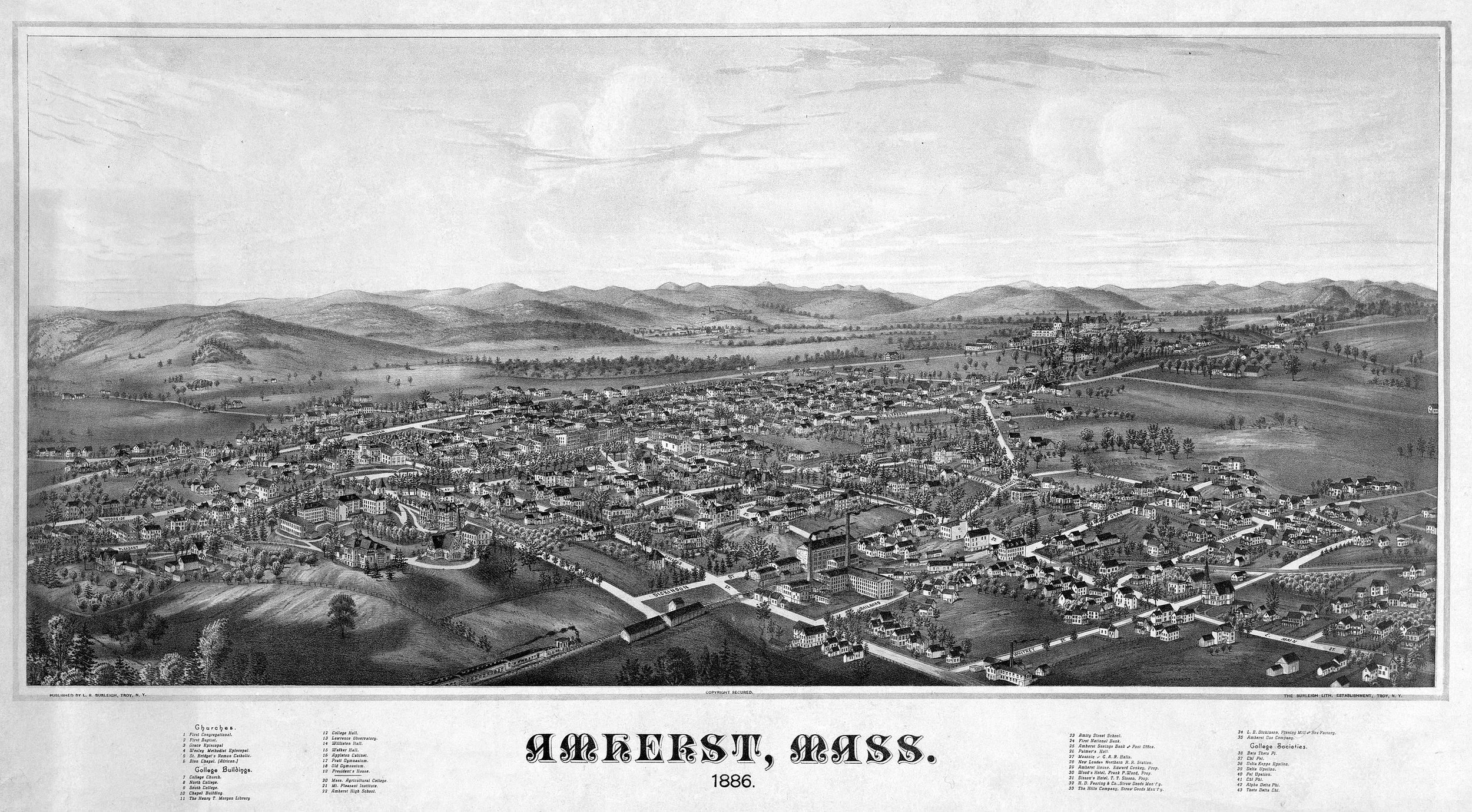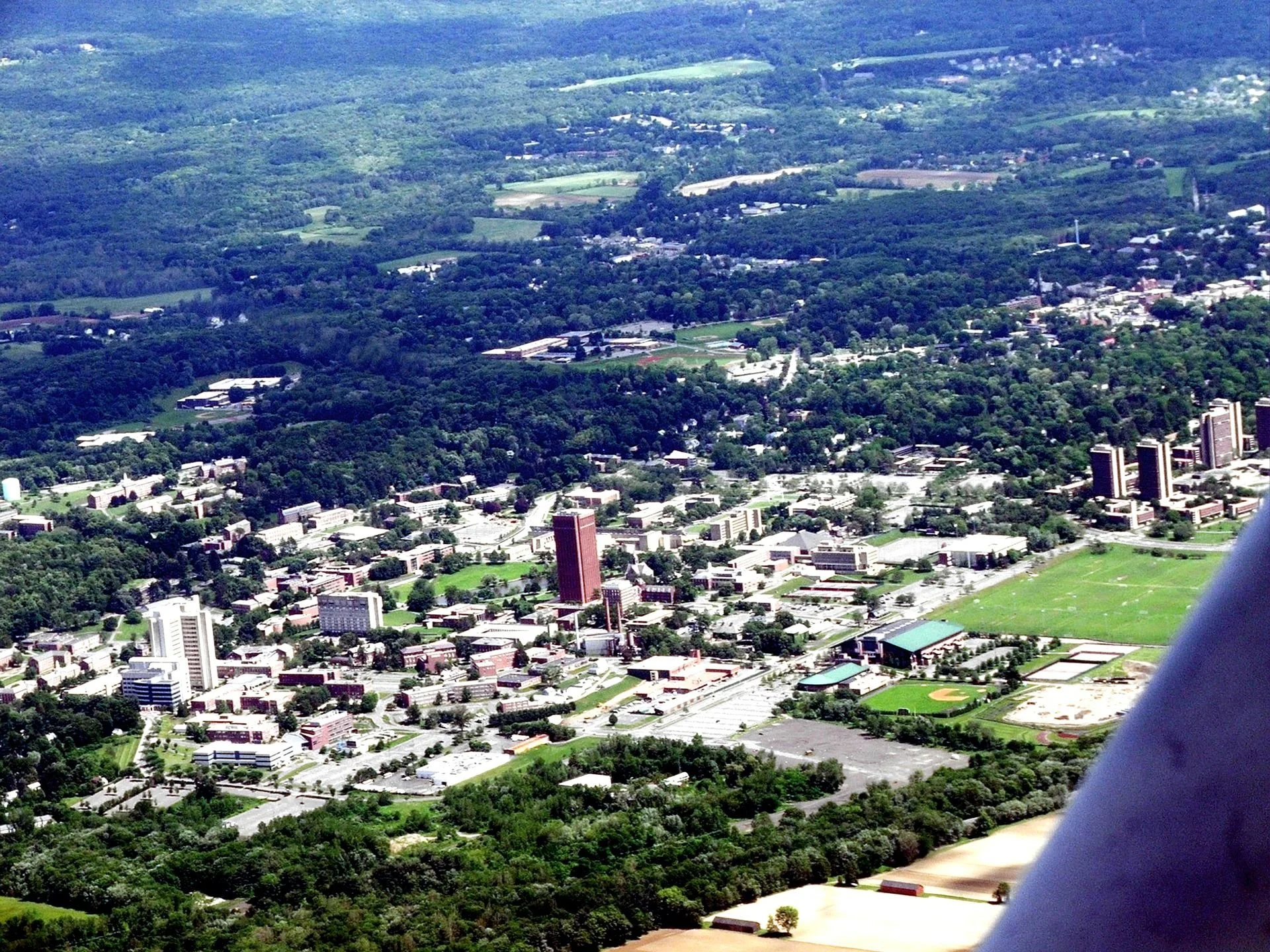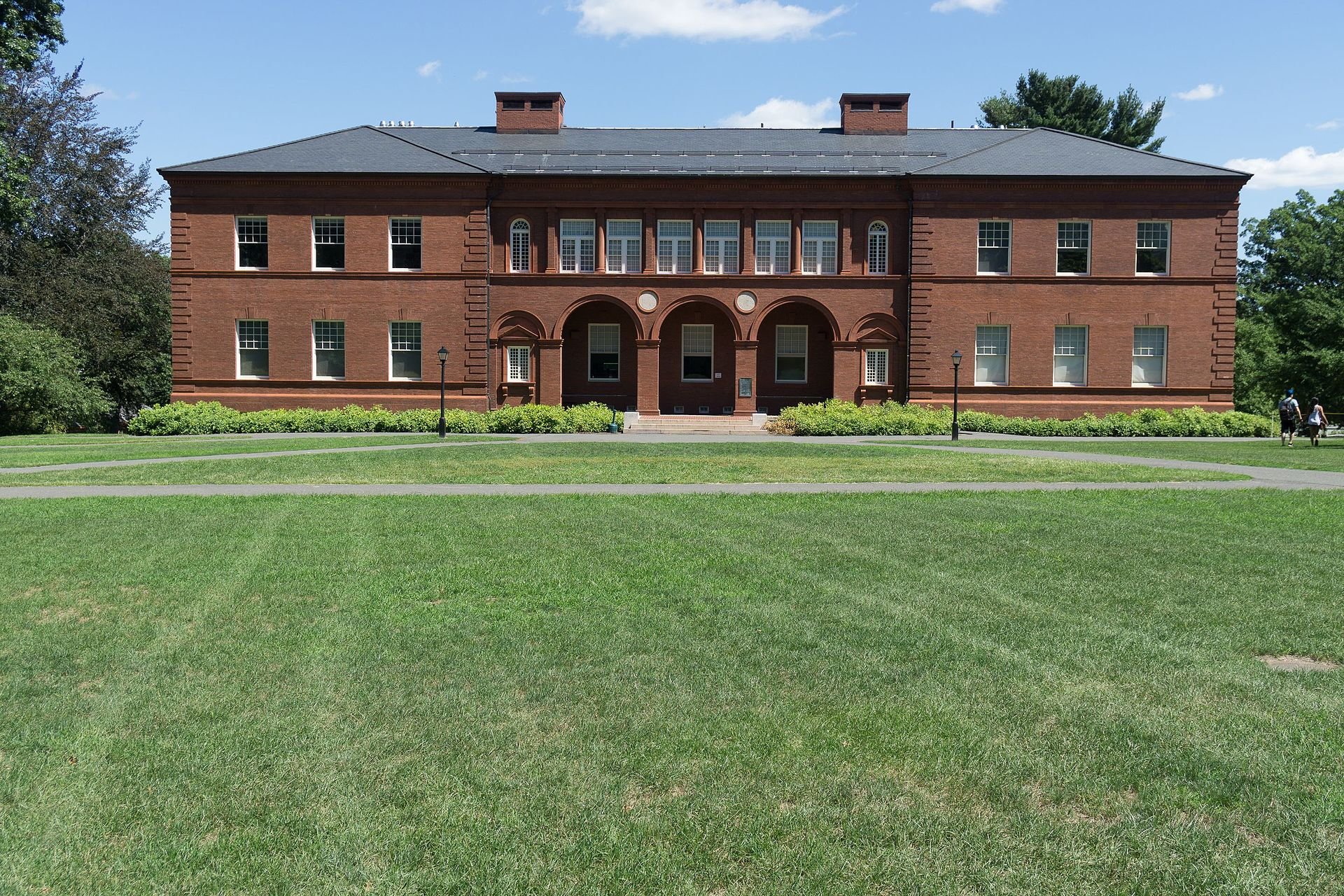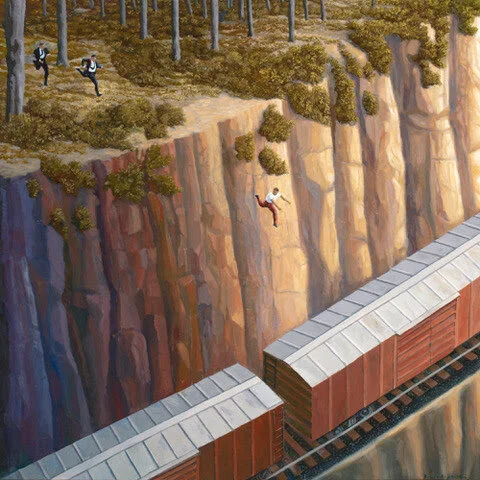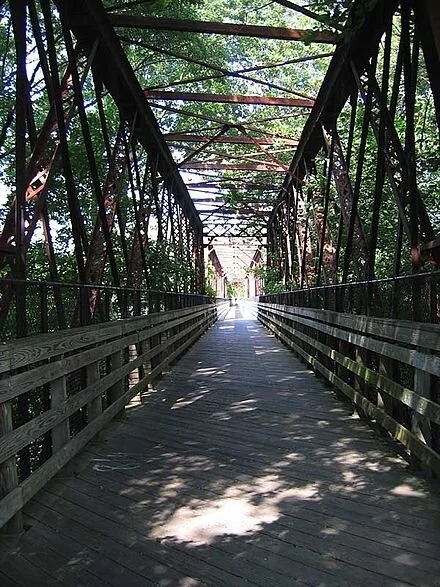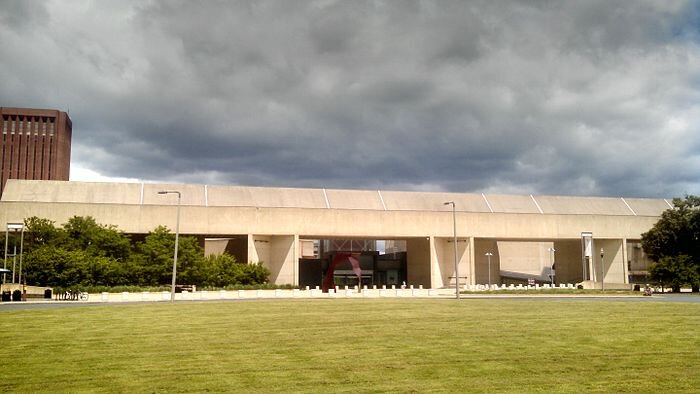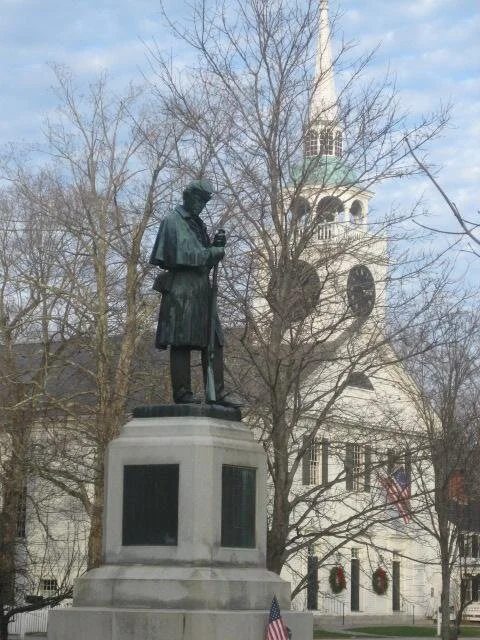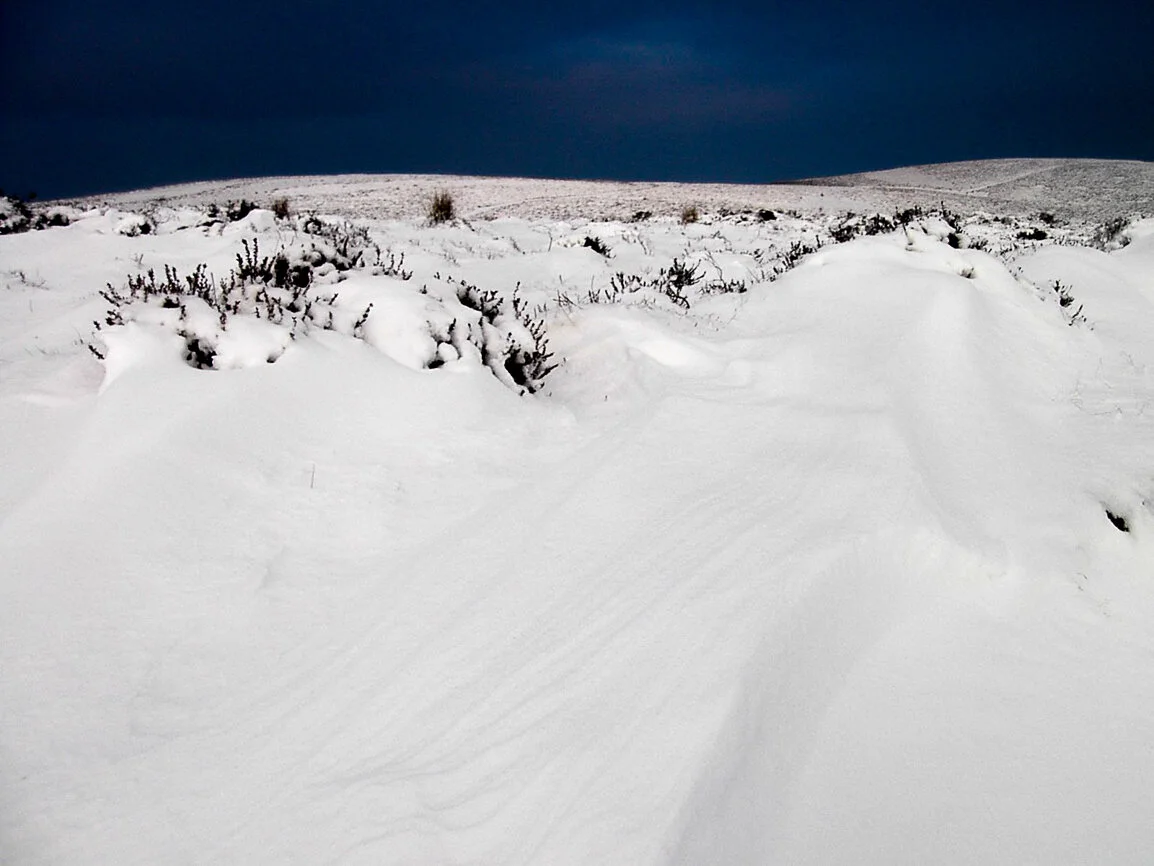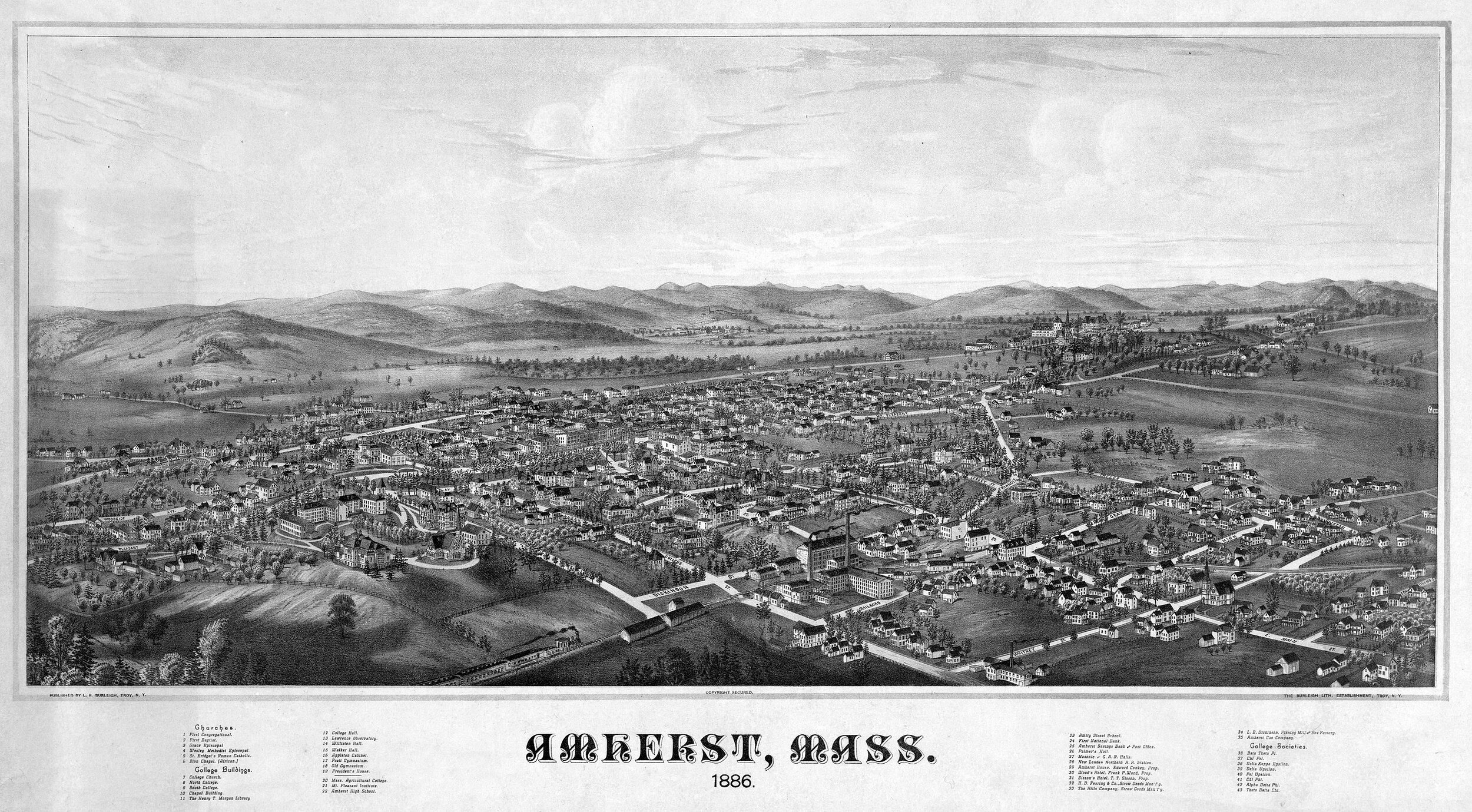
‘Often seen, seldom felt’
A Field of Stubble, lying sere
Beneath the second Sun—
Its Toils to Brindled People
Its Triumphs—to the Bin—
Accosted by a timid Bird
Irresolute of Alms—
Is often seen—but seldom felt,
On our New England Farms—
By Emily Dickinson (1830-1886). See The Belle of Amherst a 1976 play based on her work.
Ukrainian modern art and national identity
“The Caucuses (Geryusi)’’ (1915) (oil on canvas), by Oleksandr Bohomazov, in the show “The Juncture: Ukrainian Artists in Search of Modernity and Identity,’’ at the Mead Art Museum, at Amherst (Mass.) College, May 24-Oct. 13.
— Image courtesy of James Butterwick Gallery, London.
The museum says:
“This exhibition showcases the work of three leading modern artists from Ukraine who produced work during an astonishing period of the country’s cultural renaissance in the early 20th Century: Alexander Archipenko (1887–1964), Oleksandr Bohomazov (1880–1930), and Vasyl Yermilov (1894–1968). Modern and cosmopolitan by nature, their art also addresses the issues of national cultural identity at a time when their compatriots were trying to establish an independent Ukrainian state. The strikingly different fates of the three artists demonstrate the tectonic shifts and upheavals that their country underwent in the first half of the twentieth century. Their work—connected with Cubism, Futurism, Abstractionism, and Constructivism—reflects the stylistic diversity of the avant-garde landscape in Ukraine at that time. ‘‘
Doesn’t stand still
“It storms in Amherst {Mass.} five days - it snows, and then it rains, and then soft fogs like vails hang on all the houses, and then the days turn Topaz, like a lady's pin.’’
— Emily Dickinson (1830-1886), American poet, in letter to Mrs. Samuel Bowles dated Dec. 10, 1859
Separated, 'haunted' art in Amherst
“Ruins of the Supposed Temple of Hercules in the City of Cori (Rovine del Tempio supposto di Ercole nella cita di Cora)” (1769 etching), by Giovanni Battista Piranesi, (Italian, 1720-1778), in the show “Architectural Ghosts,’’ at the Mead Art Museum, Amherst, Mass., through June 25.
The show presents architectural drawings, sculptures and other subjects in the museum's collection. From 8th Century Assyrian reliefs to 20th Century Yoruba and Dogon doors, everything in this show has been "separated from their original architectural surroundings and cultural moments," bringing a "haunted" and "ghostly" sense to these works of art.
Take that!
“Hamada” (oil on canvas), by L.G. Talbot, in the show “LG Talbot: New Generation Abstraction,’’ at the University of Massachusetts Fine Arts Center, Amherst, Mass.
The exhibit features abstract work that takes on American abstract painting through large and bold paintings that "convey a distillation of lived experience,’’ says the artist whose home is in the western Massachusetts hill town of Conway and whose studio is in Easthampton, Mass.
Talbot’s artist statement says:
“In the new paintings, I work with palette knives to quickly establish images on the canvas. I keep 4-5 large canvases open – working them simultaneously – impatient for the oil to dry. Images organically surface on the picture plane. I layer more paint and create more texture. My colors have also changed. The primary colors of previous work have been usurped by a more nuanced palette replete with earthy tones. I mix the pigment, thin it out with turpentine, and build the painting in layers. This is my evolution: Borders gone, Colors blended. The pandemic is a reminder of the privilege of being alive – my every day in the studio is charged and intoxicating.’’
Historic Bardwell's Ferry Bridge, in Conway.
— Photo by Doug Kerr
View of Mt. Tom from the center of Easthampton
‘Two seasons’
“Flaming June” (1895), by Lord Leighton
There is a June when Corn is cut
And Roses in the Seed—
A Summer briefer than the first
But tenderer indeed
As should a Face supposed the Grave's
Emerge a single Noon
In the Vermilion that it wore
Affect us, and return—
Two Seasons, it is said, exist—
The Summer of the Just,
And this of Ours, diversified
With Prospect, and with Frost—
May not our Second with its First
So infinite compare
That We but recollect the one
The other to prefer?
By Emily Dickinson (1830-1886), who watched the seasons with great acuity from her home, in Amherst, Mass.
Take a deep one
“Breath” (mixed media on paper, wood panel), by Amherst, Mass.-based artist Sue Katz.
Mt. Norwottuck in the Mt. Holyoke Range, on the border between the towns of Amherst and Granby.
— Photo by Andy Anderson
And you can wear a beret
The University of Massachusetts’s burgeoning flagship campus, in the Connecticut River Valley in Amherst, looking southeast.
— Photo by Viking1943
{Amherst is} the last place in America where you can find people who think politically correct is a compliment…probably the only place in the United States where men can wear berets and not get beaten up.’’
Madeleine Blais (born 1946), journalist and professor at UMass Amherst, in In These Girls Hope is a Muscle (1995).
Amherst is best known now for UMass and Amherst and Hampshire colleges. The Connecticut Valley is thick with colleges, from Connecticut up to Dartmouth College, in Hanover, N.H.
Fayerweather Hall at Amherst College.
— Photo by Kenneth C. Zirkel
What colleges owe our democracy
The Seeley G. Mudd Building at Amherst College, the elite small liberal-arts college in the Massachusetts town of the same name that has abolished legacy admissions. The striking building, for math and computer science, was designed by Edward Larrabee Barnes and John MY Lee and Partners with Funds donated by the Seeley G. Mudd Foundation, named for a physician and philanthropist who lived from 1895 to 1968 and didn’t attend Amherst.
From The New England Journal of Higher Education, a service of The New England Board of Higher Education (nebhe.org)
WATERTOWN, Mass.
What Universities Owe Democracy; Ronald J. Daniels with Grant Shreve and Phillip Spector; Johns Hopkins University Press; Baltimore; 2021.
When the president of a major university publishes a deeply researched, closely reasoned, strongly argued powerful idea and call to the profession to respond to an urgent crisis in our national history, it is highly likely to become a classic in the literature of higher education. Ronald Daniels, president of Johns Hopkins University (co-authoring with colleagues Grant Shreve and Phillip Spector), has accomplished that with this new book, appropriately entitled What Universities Owe Democracy.
The New England Journal of Higher Education has responded to the widely recognized “epistemic crisis” in our democracy in two previous articles this year. The first, in April, unpacked the economic, technological, psychological and moral aspects of the problem, to focus on higher education’s purview of epistemology, and contended that it is incumbent upon all public educators—including journalists and jurists—from secondary schools onward, to insist that “thinking on the basis of evidence” is the only reliable way to establish and use the power of knowledge in any field. The second, in September, was a critical review of the journalist Jonathan Rauch’s recent book, The Constitution of Knowledge, asserting that he offered not a solution but part of the problem—that the epistemic crisis in public (or popular) knowledge, Rauch’s actual subject, is exacerbated by journalism’s misconceived habit of promoting as criteria of truth broad public acceptance and trust, rather than thinking on the basis of evidence.
The fundamental issue underlying both those articles—that scholars and scientists have civic responsibility—has now been addressed by Daniels, who has been previously known as a leading advocate for eliminating legacy admissions at prestigious institutions, which he did at Hopkins in 2014. His example was followed by a few others, most recently Amherst College.
The excellence of his book derives from his extraordinary idealism for higher education and the essential, indispensable role of colleges and universities in what he carefully defines as “liberal democracy.” His basic argument is that the welfare of American universities and of democracy have historically been and are strongly interdependent, so it is now necessarily in the academy’s interest to defend democracy from subversion. He poses as the “relevant question,” “How does the university best foster democracy in our society?”
His answer is painstakingly developed. Each of the book’s four chapters features careful definition of terms, a highly informative history of the chapter’s specific issue in American higher education, an analysis of its current challenges, and the author’s policy recommendations. The discussion is lucid, intellectually rigorous, and considerate of the complexities involved. This brief review cannot do justice to his detailed arguments, so I shall highlight a few points of broad interest.
A leitmotif throughout the book is what Daniels calls “liberal democracy,” which he defines in detail as an Enlightenment ideal: “liberal” in favoring individual freedom, “democracy” in promoting political equality and popular sovereignty. Whereas the two can occasionally conflict, society’s common good depends on their equitable balance. On these ideals, he writes, the United States is predicated.
The first chapter focuses on the “American Dream” of social mobility for this (in JFK’s phrase) “nation of immigrants.” Daniels elucidates the pre-eminent role universities have played in promoting it; no other institution, he says, has been throughout our history and still today more influential in that essential function. “Universities are one of the few remaining places where Americans of different backgrounds are guaranteed to encounter one another.” Therefore, colleges and universities must ensure that everything they do contributes to social mobility. This is where the issue of legacy admissions arises—about which, see more to follow.
The next chapter, “Free Minds” concerns civic education. Citizenship must be cultivated; it is not an innate trait. This used to be done by civics courses required at the high school level but in recent decades, that has languished, yielding ground to the rise of science and separate specialized disciplines. Today, only 25% of secondary schools require civic education, but because 70% of students go on to some form of postsecondary education or training, that is where, by default, civic education must be revived. Daniels advocates a “renaissance in civic learning” to reaffirm how the Founders envisioned higher education in our democracy. Noting that robust civics education is unlikely to be recovered by high schools in today’s polarized political environment, he presents a strong historical case for the inclusion of promoting democratic citizenship in higher education. Acknowledging the wide diversity of institutional types and cultures in postsecondary education today, he encourages every institution to develop its own approach.
Daniels then turns to the central role of universities in the creation, promotion and defense of knowledge, upon which liberal democracy is necessarily based. American universities have uniquely combined within single institutions their own undergraduate colleges, professional graduate schools, research facilities and scholarly publishing, protected by academic freedom and tenure. This powerful and mutually reinforcing combination has produced intellectual leadership in our liberal democracy. All this has been potently challenged, however, by developments in modern philosophy (linguistic analysis and epistemology) and more recently information technology (computers, the internet, social networks and artificial intelligence). Daniels courageously addresses these extremely complex and subtle issues (e.g., post-structuralism) in detail. His discussion is enlightening and supports his thesis that universities have a crucial role to play in intellectual leadership, “building a new knowledge ecosystem” that will protect and strengthen liberal democracy.
The next chapter “Purposeful Pluralism” discusses how colleges and universities may promote both greater diversity in their student bodies and genuine mixing of their constituencies by cultivating more inclusive communications and mutual understanding. But while greater diversification has been increased by deliberate admissions strategies, there needs to be sustained follow-through in the infrastructures of student life—in housing and rooming arrangements, dining, socializing, curricular and extracurricular settings, including faculty-student interactions and intellectual life in general. “Our universities should be at the forefront of modeling a healthy, multiethnic democracy.”
He concludes then by reviewing the overall argument, its urgency, and “avenues for reform,” which include: 1) End legacy admissions and restore federal financial aid, 2) Institute a democracy requirement for graduation, 3) Embrace “open” science’ with guardrails and 4) Reimagine student encounters on campus and infuse debate into campus programming. “The university cannot, as an institution, afford to be agnostic about, or indifferent to, its opposition to authoritarianism, its support for human dignity and freedom, its commitment to a tolerant multiracial society, or its insistence on truth and fact as the foundation for collective decision-making,” Daniels writes. “It is hardly hyperbole to say that nothing less than the protection of our basic liberties is at stake.”
While I may not completely agree with all the positions Daniels takes, I strongly believe that every academic reader will find this book highly illuminating, practically useful, and I hope, compelling. One relatively minor point of difference I have is where today’s vexed issue of legacy admissions is directly addressed. Daniels acknowledges that though the numbers of admissions decisions involved is relatively small, their symbolic significance is large, especially owing to the prominence of the institutions involved. The practice is followed by 70 of the top 100 colleges in the U.S. News rankings and, though it affects only 10% to 12% of their comparatively small numbers of students, it sends a message that is widely interpreted as elitist and undemocratic. Daniels focuses more on opposing the message than upon analyzing the practice in detail, and he provides no hard data on the process or results of the elimination of the policy anywhere.
This stood out for me as an odd departure from his usual data-intensive analytical habit. One reason for its exception is that he considers the message more important than the practical details, but another might be that data have not yet shown the abolition of legacy admissions to have significant practical impact on social mobility. Still another might be that, as I understand it, the reasons for which legacies were created are not the reasons for which they should now be abolished. They were instituted and are maintained primarily for internal institutional purposes—i.e., to encourage alumni engagement and fundraising—and not for any public message.
Here we may connect a few separate dots, not presented together in the book. Daniels abolished the practice at Hopkins in 2014 but did not announce it publicly until 2019. In that interval, he also sought and secured in 2018 a sensational gift from Hopkins alumnus Michael Bloomberg, of $1.8 billion for student financial aid. While it is understandable that Daniels would be reluctant to discuss this historical process in detail, or whether it was planned from the start and enabled by a unique advantage Hopkins had with Bloomberg as an alumnus, it is also conceivable that the Hopkins decision was not problem-free, and that the extremely generous grant was invoked as a solution.
In any case, avoiding the practical issue in the book also avoids considering a possible (though admittedly unforeseeable) solution for other institutions now—i.e., taking advantage of the unprecedentedly high multibillion-dollar gains in 2020 endowment yields and personal capital to use them separately or together to make major investments in student financial aid. This may, in other words, be an opportune time to modify legacy policies—perhaps to retain them in some refined or reduced form as an instrument supporting both student diversity and strengthening alumni relations and fundraising, while heading off the public impression of elitism.
The world is changing fast, and it is essential that universities keep up the pace. Political reform is slow and now especially cumbersome, whereas the only impediment to universities adapting and leading is the will to do so. That is where a book such as this can exert palpable influence, and considering how rare it is for such a book to be written, are we not in turn professionally obliged at least to read and think about it?
George McCully is a historian, former professor and faculty dean at higher education institutions in the Northeast, professional philanthropist and founder and CEO of the Catalogue for Philanthropy, based in Watertown, Mass.
‘Enlarging loneliness’
“Summer’,’ by Giuseppe Arcimboldo, 1573
Further in Summer than the Birds
Pathetic from the Grass
A minor Nation celebrates
Its unobtrusive Mass.
No Ordinance be seen
So gradual the Grace
A pensive Custom it becomes
Enlarging Loneliness.
Antiquest felt at Noon
When August burning low
Arise this spectral Canticle
Repose to typify
Remit as yet no Grace
No Furrow on the Glow
Yet a Druidic Difference
Enhances Nature now
— Emily Dickinson (1830-1886), of Amherst, Mass.
Corny and then depressing
—Photo by Marek Szczepanek
“Round the point flotillas of swans come trailing
sunlit V’s and W’s, otherworldly,
But a little corny….’’
“Garbo Lobster’s fleet has been sold; Monsanto,
windows broken, whistled an absent air; New
Yorkers long since bought up the nicer houses;
God, it’s depressing….’’
--From “Neoclassical,’’ by Daniel Hall (born 1952), Amherst, Mass.-based poet
Lobstering in Portland, Maine
— Photo by Mrosen99
‘Deeper inside domestic objects’
“Purple & Yellow” (accordion book with photographs), by Laura Holland, in the show “Inward & Outward’’ at Gallery A3, in Amherst, Mass., for July.
The gallery says that for Holland “home {during the pandemic} became my world, I discovered small-scale intimate still lives in eggshells on the counter, carrot peels in the sink, and pans of soapy water...I peered deeper inside domestic objects and pushed images further toward abstraction, which turned into the books of photographs.’’
In search of fast transit
“Boxcar Getaway” (oil on panel), by Bruce Ackerson, in his show “Birds-Eye Views,’’ at the University of Massachusetts at Amherst’s Hampden Gallery, through May 14.
The gallery says:
“From a birds-eye view, the artist presents narrative scenes which are an imaginative take on popular culture, modern life and the hidden world of the human psyche.’’
Mr. Ackerson is based in Northampton, Mass.
The Norwottuck Rail Trail Bridge across the Connecticut River at Northampton. The Norwottuck Branch Rail Trail, formerly the Norwottuck Rail Trail, is an 11-mile-long bicycle/pedestrian paved right-of-way running from Northampton through Hadley and Amherst, to Belchertown, all in Massachusetts. It opened in 1992, and is part of the longer Mass Central Rail Trail.
'Go home! People are dying!'
“Orthodox Jewish wedding party broken up by NYPD, Lower East Side, NYC, April 20, 2020, 10:30 p.m., 2020” (ink and watercolor on paper), by Steve Mumford, in his show through May 14 at the Hampden Gallery at the University of Massachusetts at Amherst.
The gallery says:
“The work evokes a sense of chaos unique to New York City and there is a sense of muted drama in the way the figures stand on the crowded sidewalk. In the background people peer from their apartment windows; in the lower right-hand corner a caption reads, ‘Someone shouts from window: Go home! People are dying!!’ {in the COVID pandemic} The sense of urgency is potent. Mumford is not a journalist…but instead allows for the complexities and tensions of the event at hand to emerge."
The dramatic Fine Arts Center at the University of Massachusetts at Amherst, where’s you’ll find the Hampden Gallery
'Purifying fires'
Civil War memorial on the common of Amherst, N.H. The town was named for mass murderer Lord Jeffrey Amherst. (See below.)
“The Republic needed to be passed through chastening, purifying fires of adversity and suffering; so these came and did their work and the verdure of a new national life springs greenly, luxuriantly, from their ashes.’’
— Horace Greeley, New York City editor, publisher and essayist, in Greeley on Lincoln. A native of Amherst, N.H., he was and is widely quoted. He is famously reputed to have said: “Go West, young man, go West and grow up with the country.’’
Greeley birthplace
Settled about 1733, Amherst was first called "Narragansett Number 3", and then later "Souhegan Number 3". In 1741, settlers formed the Congregational church and hired the first minister. Chartered on Jan. 18 1760, the town was named for General Lord Jeffrey Amherst, who commanded British forces in North America during the French and Indian War. Lord Amherst is also known for promoting the practice of giving smallpox-infected blankets to Native Americans in an effort "to Extirpate this Execrable Race" (as quoted from his letter to Col. Henry Bouquet on July 16, 1763). His actions may have killed at least 100 people.
'Lost in fleeces'
—- Photo by Sean the Spook
It sifts from leaden sieves,
It powders all the wood,
It fills with alabaster wool
The wrinkles of the road.
It makes an even face
Of mountain and of plain, —
Unbroken forehead from the east
Unto the east again.
It reaches to the fence,
It wraps it, rail by rail,
Till it is lost in fleeces;
It flings a crystal veil
On stump and stack and stem, —
The summer’s empty room,
Acres of seams where harvests were,
Recordless, but for them.
It ruffles wrists of posts,
As ankles of a queen, —
Then stills its artisans like ghosts,
Denying they have been.
— By Emily Dickinson (1830-1886), of Amherst, Mass.
She's heard it before
—- Photo by Mathias Krumbholz
“An old woman by a window watching the storm —
Dark River and dark sky and furious wind
Full of green flying leaves, gray flying rain….
Daughters and grandchildren in a darkened room….
Call to her to come, to come away….
Above the wind and the crash of a porch chair
And now the thunder, she does not seem to hear
Or if she hears, she does not answer them….’’
— From “The Reading of the Psalm,’’ by Robert Francis (1901-87). He lived in Cushman Village, part of Amherst, Mass. Robert Frost much admired him.
Keet House, one of many old houses in the Cushman Village Historic District
Combining COVID-19 forecasts
The UMass School of Public Health
Nicholas Reich, a professor at the University of Massachusetts School of Public Health, in Amherst, has created a forecast center to bring together multiple models to create an ensemble forecast to project COVID-19’s spread and effects. The Influenza Forecasting Center of Excellence projections will include hospitalizations and new cases at state and national levels. Hit this link to learn more.
Carpe diem
Gravestone of Emily Dickinson, in West Cemetery, Amherst, Mass.
That it will never come again
Is what makes life so sweet.
Believing what we don’t believe
Does not exhilarate.
That if it be, it be at best
An ablative estate —
This instigates an appetite
Precisely opposite.
— Emily Dickinson
”An ablative estate’’ refers to ablation, an operation involving removing body tissue — something that heals but that also involves losing part of the patient.
'Wider sunrise in the dawn'
An altered look about the hills;
A Tyrian light the village fills;
A wider sunrise in the dawn;
A deeper twilight on the lawn;
A print of a vermilion foot;
A purple finger on the slope;
A flippant fly upon the pane;
A spider at his trade again;
An added strut in chanticleer;
A flower expected everywhere;
An axe shrill singing in the woods;
Fern-odors on untravelled roads, —
All this, and more I cannot tell,
A furtive look you know as well,
And Nicodemus' mystery
Receives its annual reply.
— Poem on April, by Emily Dickinson
Amherst in the year that lifelong resident Emily Dickinson (born 1830) died.
